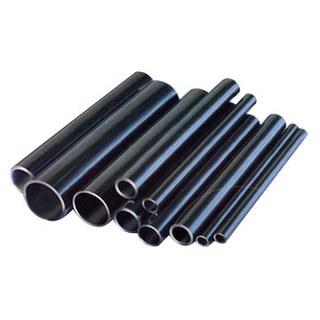It is known that metals with a high degree of purity (99.99 or more percent pure substance) have low strength, which complicates their use. The exception is aluminum and copper used in electrical engineering. Steel , in connection with their functionality, must have rigidity, wear resistance, hardness, and also, in some cases, ductility and elasticity, so iron in its pure form is unsuitable for their creation.
Alloyed steels differ from ordinary ones by the presence of artificially introduced additives that predetermine certain properties of the future alloy. So, in ordinary carbon steel they are contained in various proportions of the “grain” of ferrite, cementite and perlite. When alloying elements are introduced, the amount of carbon in perlite is most often reduced (the strength of steel increases).
Due to the introduction of additional substances, alloyed steels often have a distorted crystal lattice, which can provide additional viscosity (when grinding perlite and ferrite grains), a decrease in internal stress, a decrease in the likelihood of cracking during hardening, or an increase in the calcination depth of a material, etc.
The properties of alloy steel are directly dependent on additional components. For example, the elements chromium and nickel save metal parts from corrosion, manganese increases resistance to shocks, increases wear resistance and hardness. An element such as silicon allows products to better withstand the effects of acids, and cobalt increases heat resistance.
According to the chemical composition, alloyed steels are divided into high-, medium- and low-alloyed (the content of additives is more than 10%, 2.5 - 10% and less than 2.5%, respectively). Medium-alloyed steels (additions about 5-6%) of pearlite structure are produced in bulk. The remaining structural compositions of the alloys (martensitic, carbide, austenitic, ferritic) are less common.

For materials of this type, as well as for other industrial products, there is a GOST. Alloy steels are classified according to state standards No. 4543 - 71, from which you can find out the number of additional components in steel of a particular brand. For example, a chromium-manganese-nickel alloy with titanium and molybdenum of sample 25KHGNMT contains up to 0.29% carbon, up to 0.37% silicon, up to 0.8 percent manganese, up to 0.6% and 1.10% chromium and nickel (respectively ), up to half percent molybdenum and up to 0.09 percent titanium. In addition to the assortment and technical requirements, GOST contains complete data on product testing methods, rules for acceptance, transportation, packaging, etc.
Alloyed steels are also divided into several groups according to their purpose: structural (used in mechanical engineering, the construction of bridges, wagons, oil and gas pipelines, springs, springs, etc.), tool (they make cutting tools, such as drills, files, saws, mills, etc. .) and special-purpose steels having high resistance to corrosion of the electrochemical type.